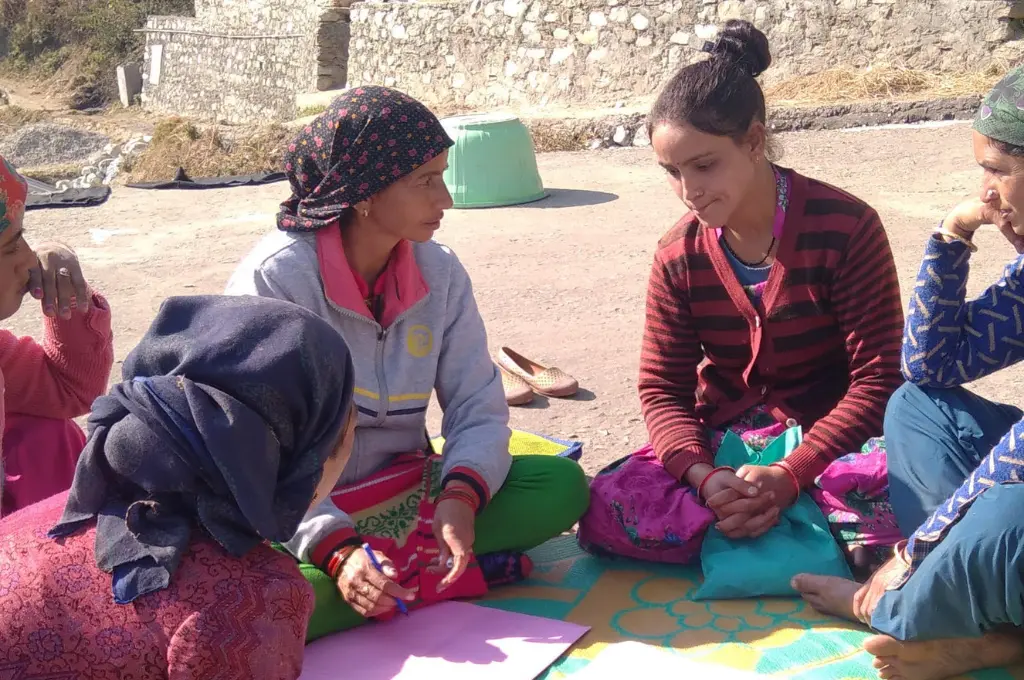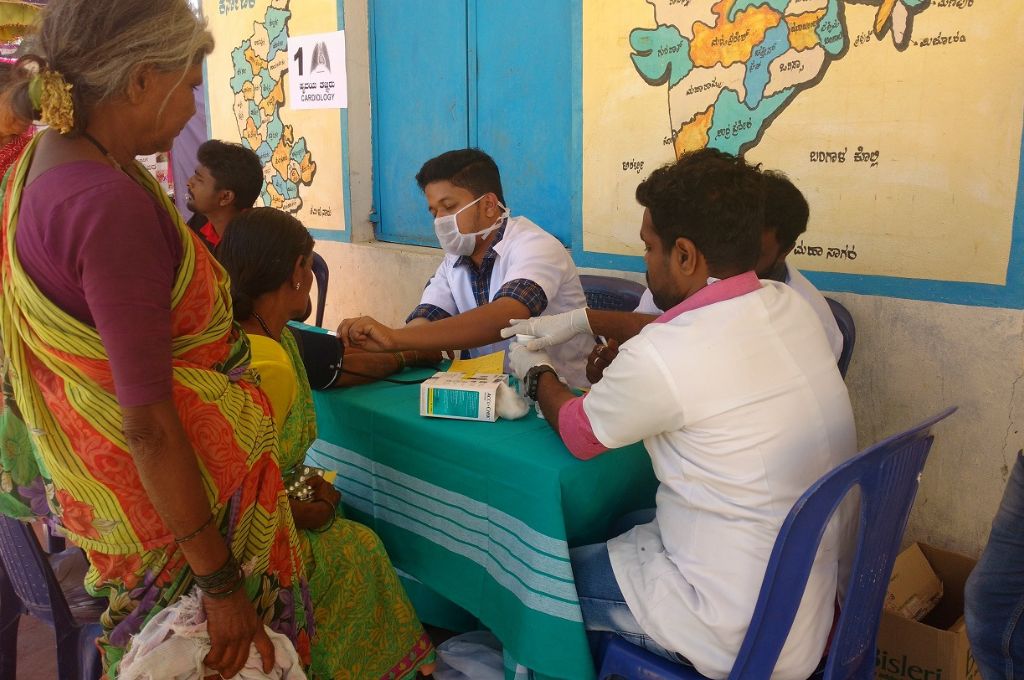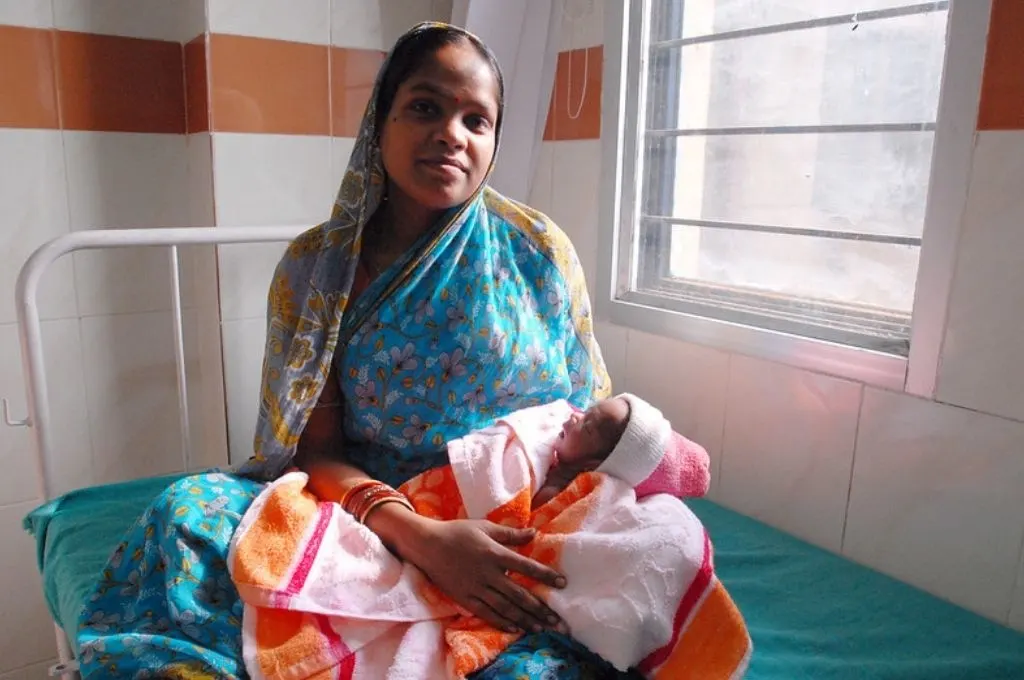Consider this:
One in five human rights advocates meet criteria for Post Traumatic Stress Disorder (PTSD). Another 14.7 percent of them suffer from depression. In a 2018 survey of foundation and nonprofit employees in the United Kingdom, 42 percent stated that their work posed challenges to their mental health. In another UK study, 57 percent of respondents who were social workers confessed to using emotional eating as a mechanism to cope with work stress; 35 percent of them used alcohol. It gets worse: 63 percent reported having difficulties sleeping, 56 percent said that they were emotionally exhausted, and 75 percent said they were concerned about burnout.
Changemakers—activists, social entrepreneurs, disaster relief workers, healthcare providers, teachers, and many others—are at the heart of addressing the many challenges faced by people and the planet. And because of the nature of their work, which often involves operating in extremely complex environments with limited resources, many are burning out and experiencing a host of other well-being issues. This shows up in the form of high rates of depression, substance abuse, early onset of chronic disease, high divorce rates, and more. The reality is that much of social change work can be traumatising. This is especially true in the cases of those who may choose to do this work because they previously experienced trauma themselves.
The reality is that much of social change work can be traumatising.
From the frontlines to management, across the world, it is becoming clear that there is a deep underlying issue of inner well-being that needs to be addressed. At the same time, the challenges changemakers are addressing are only increasing.
Related article: But, what about mental health?
In India, the problem is likely to be worse
Social change leaders need an ecosystem of support in order to consistently and compassionately balance self-care with caring for the communities they serve. And in India, despite there being a bustling social sector ecosystem, support for inner well-being is a conversation that is only just beginning, and even then, it is in isolated pockets and hushed tones. While many of us working in this space in India recognise burnout as a very real and present danger, there is a general lack of awareness and understanding about how to actively avoid it, or how to prioritise self-care and preservation, doing the work we do.
To make matters worse, there is no data on the size and shape of the problem either. We know that in India, while 150 million people are in dire need of mental health intervention, only a fifth of that number—30 million—have access to appropriate care. These figures are likely underreported, due to the stigma surrounding mental illness in general, as well as the seeking of professional care for it. This is perhaps one of the reasons why the field of mental health and well-being in India has remained under-developed for much of the country’s history. The entire mental health workforce in India today, which includes psychiatrists, psychologists, nurses, and psychiatric social workers, is around 7,000 people, when the actual requirement is 55,000. Apart from Kerala, no state even meets the basic requirement of having at least one psychiatrist per 100,000 people. Plus, a majority of these psychiatrists are concentrated in urban areas. The situation in other developing nations is not unlike that in India.
While there have been nonprofit organisations doing incredible work in this field, much more needs to be done—by individuals, families, communities, companies, and governments. At the very least, Indian society needs to engage in a more open and compassionate discourse on the need for mental and emotional well-being, so people don’t opt out of seeking care. Bringing this shift in our culture—and in our sector—is an important step towards normalising self-care and looking inwards.
Enter The Wellbeing Project
Given how the term ‘well-being’ is regularly used across the fields of social change and health in various contexts, a single definition would be reductive, as it represents an ongoing personal journey towards wholeness and connection. It is a journey of inner work that entails healing, personal development, and ultimately, integration of self. And so, the practices that support an individual’s inner well-being vary depending on their needs. Whether it’s meditating every day, taking a walk or spending more time with family, reflecting on one’s life, or seeing a therapist—these are all examples of pursuing well-being.
In 2014, The Wellbeing Project (TWP) was launched to catalyse a culture of inner well-being among all changemakers. Co-created with Ashoka, Esalen, Impact Hub, Porticus, Skoll Foundation, and Synergos, TWP emerged from interviews with leading changemakers around the world, in which they shared their personal struggles (such as a lack of adequate time for family, the inability to have conversations unrelated to work, and the struggle to achieve happiness and balance in life), and their subsequent need for support.
While 75 percent of respondents felt that caring for their well-being was ‘very important,’ only 25 percent reported that they were doing so ‘to a great extent’.
In 2017, TWP initiated a six-month, comprehensive, multi-round, web-based Delphi study,1 with an international group of more than 250 changemakers from 55 countries, to better understand the breadth of the issue and the types of well-being needs in the social change field. It revealed that while 75 percent of respondents felt that caring for their well-being was ‘very important,’ only 25 percent reported that they were doing so ‘to a great extent’. The primary reasons for not tending to well-being included a range of health-related issues, lack of resources, the feeling that work is never done, and the feeling that self-care is indulgent. Respondents found it difficult to distance themselves from their work because of how closely their identity was linked with their roles.
Alongside this study, TWP undertook an 18-month Inner Development Programme (IDP) offering deep, sustained support for inner well-being to three groups of 20 social change leaders from 45 different countries. Participants included social entrepreneurs, social activists, and nonprofit leaders. A team of seven researchers conducted longitudinal qualitative research over three years, to learn how this support impacts changemakers, as well as their ability to create social change, during and following their 18-month immersion experience.
Related article: Mental health at work
Lessons from the research
While keeping in mind that the process of inner well-being is ongoing, complex, and evolving, what became clear through the process was that while there may be obstacles, these inner shifts have an impact at an individual, organisational, and systemic level. In terms of obstacles, participants reported struggling to communicate effectively with donors and board members about their needs and the resources they would like to devote to this, and facing scepticism among peers given the prevailing perception that “well-being is a luxury.” Nevertheless, they reported remarkable shifts at various levels of engaging with others.
We list a few of them below:
- Experiencing less anxiety around failure, and detaching themselves from negativity.
- Being more present with their staff, and listening more.
- Reclaiming an identity that is more whole, and less defined by work.
- Having a better understanding of their emotions, allowing them to respond to situations with calm and ease.
- Placing more trust in staff, colleagues, and peers, and no longer ascribing to the belief that “If I am not there (or: in charge/always working/responding to emails right away), things will fall apart.”
- Even in moments that were challenging, participants shifted from an “only I can fix it” approach to prioritising relationship building as the first step of problem solving.
- Making a conscious effort to empower members of their staff through building their capacity.
- A shift towards being able to be more open to others, and to collaborating with them.
- The ability to assimilate new perspectives related to social change.
- Approaching work differently and more holistically. While some participants were able to place themselves in the shoes of the communities they serve, others were able to approach work in a healthier way, with a sense of ease and play.
This exercise marks the first large scale exploration into understanding in what ways the inner well-being of changemakers influences how social change happens. It is intended to establish a preliminary base to encourage further research.
Centred Self: A series exploring the connection between inner well-being and social change
This article marks the launch of a series intended to throw the conversation on individual and organisational well-being wide open. The series is a collaboration between IDR, The Wellbeing Project, Stanford Social Innovation Review, and the Skoll Foundation, and will bring together perspectives and learning from across the field. IDR will be exploring issues particularly related to well-being in India, and generally related to other countries in the majority world.
We will explore themes such as the inter-connectedness between leadership and inner work; what organisations are doing to enable a culture of well-being while operating in a resource-constrained environment; the practice of self-care from the lens of historical movements and movement building; and burnout among social change leaders and the stigma associated with asking for help or ‘slowing down’.
We are excited to broaden the learning journey so more of us can be active participants in this unfolding cultural shift. We hope you will follow the series, and we welcome your voices to the discussion.
- 47 percent of study participants were between 25-34 years old; 30 percent were 35-44 years old; and, 70 percent of the overall group identified as female. Participants held different kinds of roles and worked in different sub-sectors in the field of social change.
Know more
- Read this article, Connecting Individual and Societal Change, on Stanford Social Innovation Review, which explores how supporting the inner well-being of changemakers can boost innovation and collaboration, and ultimately lead to more effective solutions (the piece also features the findings from The Wellbeing Project’s research in greater depth).
- Explore how changemakers’ inner well-being influences their work from this research paper that establishes the connection between well-being and social change.
- Watch Kabir Vajpeyi share his experiences with inner well-being from a CEO’s perspective.
Do more
- Get involved with The Wellbeing Project, contribute, or become a part of the network.







